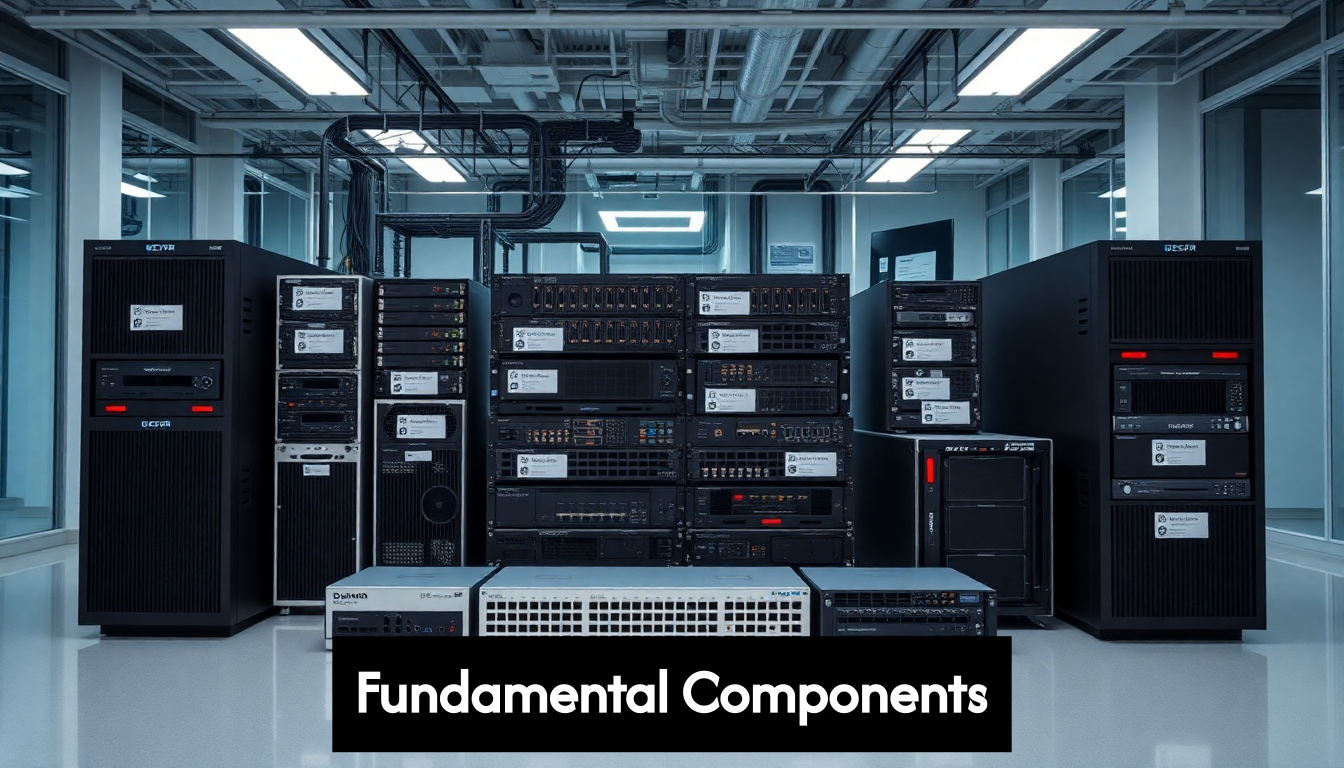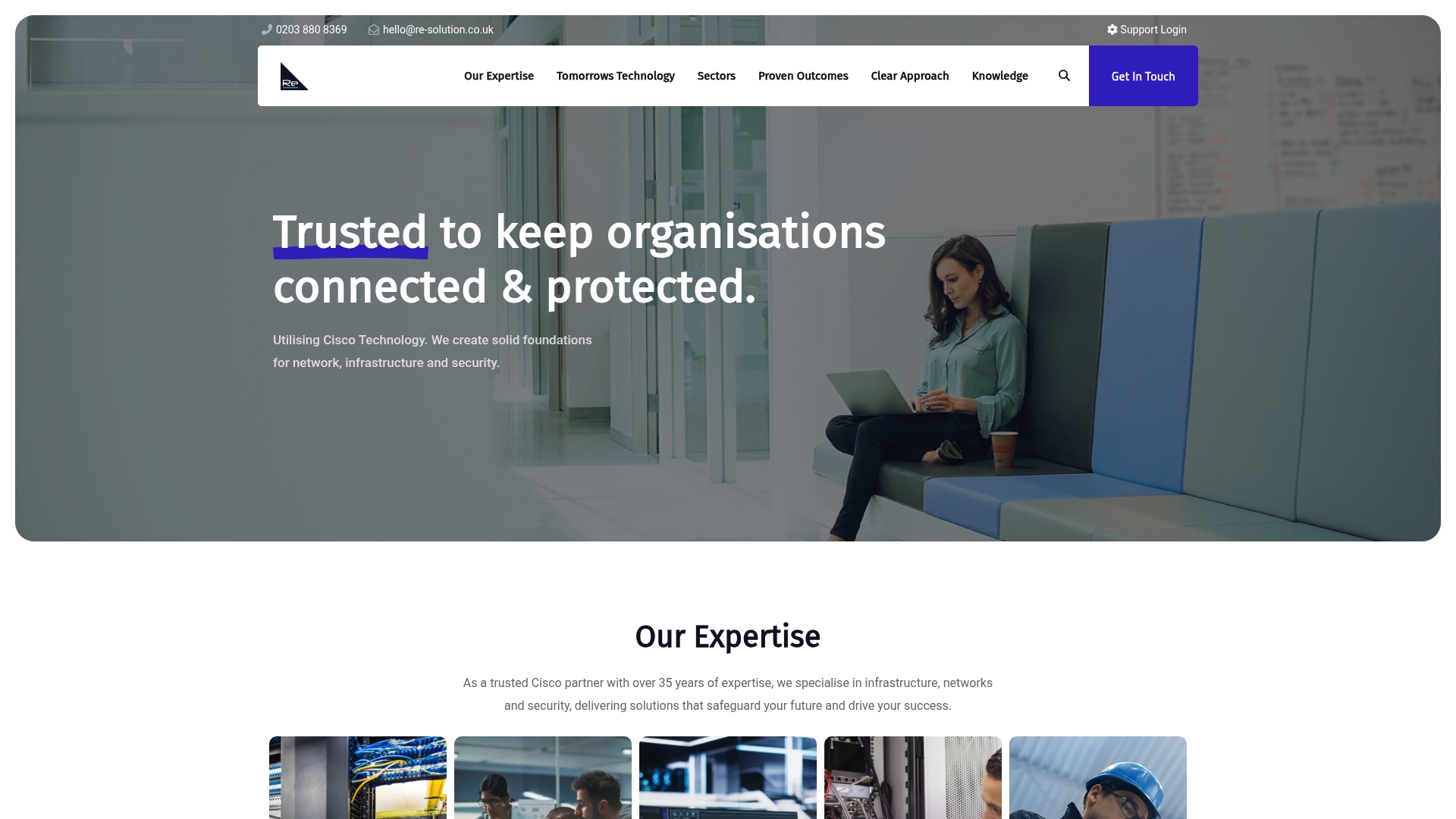
In today’s digital age, IT infrastructure is more than just a technical necessity; it’s the engine driving business success. Did you know that nearly 70% of companies rank effective IT infrastructure as a key factor in their ability to innovate? But here’s the twist: it’s not just about having the latest technology. Many organisations overlook the vital role of aligning their IT infrastructure with overarching business goals. What if the secret to unlocking your organisation’s true potential lies not in more advanced tech, but in a deeper understanding of how these components interact to shape operational excellence?
Understanding IT Infrastructure Basics
IT infrastructure forms the backbone of modern organisations, providing the essential foundation upon which all digital business operations run. Understanding IT infrastructure basics is critical for businesses seeking to build efficient, secure, and scalable technology environments. At its core, IT infrastructure encompasses all the hardware, software, networks, facilities, and related equipment used to develop, test, deliver, monitor, and support IT services.
The Fundamental Components of IT Infrastructure

The complexity of IT infrastructure can be broken down into several key components that work together seamlessly:
Hardware Resources: These physical elements include servers, computers, data centres, switches, hubs, and routers. They provide the computing power and physical connections necessary for data processing and transmission. Modern data centres, for instance, centralise IT operations and offer benefits including cost savings, high availability, and enhanced security while comprising multiple layers from networking to data storage according to research from Dev.to.
Software Resources: This category encompasses operating systems, applications, management tools, and other programs that direct hardware functions and provide user capabilities. Software resources translate user commands into computer functions and serve as the interface between users and hardware.
Network Infrastructure: The communication pathways and network services that connect computers and related devices. This includes local area networks (LANs), wide area networks (WANs), internet connectivity, firewalls, and security. Efficient networking relies on various components including switches, routers, and high-speed technologies to enable reliable data transfer.
Storage Infrastructure: Data storage systems that maintain and manage digital information, including direct-attached storage (DAS), network-attached storage (NAS), and storage area networks (SAN). These systems provide businesses with the capacity to store and retrieve essential data.
Modern IT Infrastructure Approaches
Contemporary IT infrastructure has evolved significantly beyond traditional on-premises setups. Today’s infrastructure landscape includes:
Virtualisation: This technology allows for the creation of virtual versions of physical hardware, enabling more efficient use of computing resources. Through virtualisation, multiple virtual machines can run on a single physical server, increasing resource utilisation while reducing hardware costs.
Cloud Computing: Cloud-based infrastructure provides on-demand access to computing resources over the internet. Whether through public cloud providers like AWS, Microsoft Azure, and Google Cloud, or through private cloud deployments, organisations can scale resources based on demand without significant capital investments.
Hybrid Environments: Many organisations employ a blend of on-premises, private cloud, and public cloud services to meet their specific requirements, balancing performance, security, and cost considerations.
The Strategic Importance of IT Infrastructure
Robust IT infrastructure delivers far more than technical functionality—it serves as a strategic business asset. Well-designed infrastructure:
- Enhances operational efficiency by streamlining processes and reducing manual work
- Improves business continuity through redundancy and disaster recovery capabilities
- Enables scalability to accommodate business growth without major system overhauls
- Strengthens security posture against evolving cyber threats
- Supports innovation by providing the technical foundation for new initiatives
Understanding IT infrastructure basics is not merely a technical necessity but a business imperative. As digital transformation continues to reshape industries, organisations with robust, flexible infrastructure gain significant competitive advantages through improved agility, reduced operational costs, and enhanced customer experiences. The foundational knowledge of IT infrastructure components and their interrelationships provides the essential context for making informed technology decisions.
Key Takeaways
| Takeaway | Explanation |
|---|---|
| Understanding IT Infrastructure is Crucial | IT infrastructure is essential for the efficient and secure operation of modern organisations, comprising hardware, software, networks, and storage systems that support IT services. |
| Embrace Modern Approaches | Incorporating technologies like virtualisation, cloud computing, and hybrid environments can significantly enhance flexibility, scalability, and cost-efficiency in IT infrastructure management. |
| Operational Efficiency Leads to Cost Optimisation | A well-structured IT infrastructure streamlines processes and reduces downtime, leading to significant cost savings and improved resource allocation. |
| Focus on Security and Compliance | Robust infrastructures must prioritise security measures and compliance frameworks to safeguard against evolving cyber threats and ensure business continuity. |
| Plan for Future Trends | Stay abreast of emerging trends like hybrid multi-cloud environments, edge computing, and AI-driven management to enhance adaptability and maintain competitive advantages in the evolving digital landscape. |
Key IT Infrastructure Components
A robust IT infrastructure is composed of several critical components that work in concert to deliver reliable technology services across an organisation. Understanding these building blocks is essential for businesses seeking to design, implement, and maintain effective IT systems. Let’s examine the core components that form the foundation of modern IT infrastructure.
Hardware Systems
Hardware forms the physical backbone of IT infrastructure, providing the computational power and storage capabilities necessary for business operations. Key hardware components include:
Servers: These high-performance computing devices host applications, manage network resources, and process data requests from users. Servers come in various configurations optimised for different workloads, from web hosting and database management to virtualisation and high-performance computing. Modern server deployments often incorporate redundancy to ensure high availability.
End-user Devices: Desktop computers, laptops, tablets, and smartphones comprise the front-end hardware that employees use to interact with business systems. The selection of appropriate end-user devices depends on job requirements, mobility needs, and security considerations.
Networking Equipment: Routers, switches, access points, and other networking hardware establish the connectivity fabric that links all IT components together. High-quality networking equipment ensures reliable data transmission, appropriate bandwidth allocation, and network segmentation for security purposes.
Storage Systems: From traditional disk arrays to modern solid-state storage solutions, these systems house organisational data. Enterprise storage must balance performance, capacity, reliability, and cost considerations. Many organisations implement tiered storage approaches, using faster, more expensive media for critical, frequently-accessed data and less expensive options for archival storage.
Software Infrastructure
Software components provide the intelligence that manages and coordinates hardware resources:
Operating Systems: These foundational software platforms manage hardware resources and provide services to applications. Windows Server, various Linux distributions, and specialised operating systems for network equipment form the software foundation upon which other components operate.
Virtualisation Platforms: Technologies that abstract physical hardware, allowing multiple virtual machines to run on a single physical server. Virtualisation has revolutionised IT infrastructure by improving resource utilisation, enhancing flexibility, and enabling rapid provisioning of new systems.
Middleware: Software that bridges operating systems and applications, facilitating communication between different software components. Middleware often handles functions like data integration, application services, and message queuing.
Database Management Systems: Specialised software designed to store, retrieve, and manage data efficiently. From traditional relational databases to modern NoSQL and NewSQL systems, these platforms ensure data integrity, performance, and availability.
Network Architecture
Network infrastructure provides the essential connectivity that allows all components to communicate:
Local Area Networks (LANs): Connect devices within a limited geographical area such as an office building. LANs typically employ Ethernet technology and may be segmented into virtual LANs (VLANs) for improved security and performance.
Wide Area Networks (WANs): Connect geographically dispersed locations, enabling communication between branch offices and data centres. Modern WAN implementations often incorporate software-defined networking (SDN) to improve flexibility and manageability.
Network Security Systems: Firewalls, intrusion detection/prevention systems, and network access control solutions protect the infrastructure from unauthorised access and cyber threats.
Cloud and Hybrid Solutions
Modern IT infrastructure increasingly incorporates cloud services to enhance capabilities and flexibility. Research from Arxiv highlights how cloud infrastructures leveraging microservices, containerisation, and serverless architectures, along with redundancy techniques like replicated servers and load balancing, can significantly improve business continuity and operational efficiency.
Public Cloud Services: Third-party platforms providing on-demand access to computing resources, storage, and applications through the internet. Major providers include AWS, Microsoft Azure, and Google Cloud Platform.
Private Cloud: Cloud infrastructure dedicated to a single organisation, either hosted on-premises or by a third-party provider. Private clouds offer greater control over resources while maintaining many cloud benefits.
Hybrid Cloud: Environments that combine on-premises infrastructure, private cloud, and public cloud services, allowing data and applications to be shared between them. Hybrid approaches enable organisations to maintain control of sensitive systems while leveraging the scalability and cost-efficiency of public cloud for appropriate workloads.
Each of these components contributes to the overall functionality, reliability, and security of the IT infrastructure. The optimal configuration depends on an organisation’s specific requirements, including performance needs, security considerations, budget constraints, and scalability expectations. When designed and implemented effectively, these components create a cohesive system that supports business operations and enables digital transformation initiatives.
Business Benefits and Practical Applications
A well-designed IT infrastructure delivers substantial business advantages beyond mere technical functionality. When strategically implemented, IT infrastructure can transform operations, enhance competitiveness, and drive organisational growth. Let’s explore the tangible benefits and real-world applications that make IT infrastructure a critical business asset.
Operational Efficiency and Cost Optimisation
Properly structured IT infrastructure significantly improves operational efficiency across business functions. By automating routine tasks and streamlining workflows, organisations can reallocate human resources to higher-value activities that require creativity and critical thinking.
Modern infrastructure solutions enable substantial cost optimisation through several mechanisms:
Reduced Downtime: Resilient infrastructure with built-in redundancy minimises costly service interruptions. When systems remain operational despite individual component failures, businesses avoid the financial impact of disrupted operations. For example, a manufacturing firm with redundant network paths can maintain production even when a primary connection fails.
Resource Optimisation: Virtualisation and cloud technologies allow organisations to dynamically allocate computing resources based on actual demand rather than theoretical peak requirements. This flexibility eliminates the need to maintain excess capacity for occasional spikes, reducing both capital and operational expenditure.
Energy Efficiency: Contemporary data centre designs incorporate advanced cooling systems, energy-efficient hardware, and intelligent power management to reduce electricity consumption. These improvements translate directly to lower utility bills while supporting environmental sustainability goals.
Scalability and Business Agility
In today’s rapidly evolving business landscape, the ability to adapt quickly to changing circumstances represents a significant competitive advantage:
Rapid Growth Accommodation: Cloud-based infrastructure enables businesses to scale operations quickly without the delays associated with traditional hardware procurement. A retail business can double its website capacity within hours to handle holiday shopping traffic, then scale back during quieter periods to control costs.
Geographic Expansion: Modern IT infrastructure facilitates business expansion into new markets without establishing physical data centres in each location. Companies can deploy applications and services in cloud regions near their customers while maintaining centralised management.
Market Responsiveness: Agile infrastructure allows organisations to respond swiftly to emerging market opportunities. When a competitor exits a market segment, businesses with flexible infrastructure can rapidly deploy new offerings to capture available market share.
Enhanced Customer Experience
IT infrastructure directly impacts the quality of customer interactions across multiple touchpoints:
Performance and Reliability: Fast, consistently available systems create positive customer experiences. When websites load quickly, transactions process immediately, and services remain accessible, customer satisfaction increases. Conversely, slow or unreliable systems can drive customers to competitors.
Personalisation Capabilities: Modern infrastructure supports data analytics that enable personalised customer experiences. By processing customer data in real-time, organisations can tailor offerings to individual preferences, increasing both satisfaction and sales conversion rates.
Omnichannel Support: Integrated infrastructure allows businesses to provide seamless customer experiences across physical stores, websites, mobile applications, and call centres. Customers can start interactions in one channel and continue in another without repeating information.
Data-Driven Decision Making
Robust IT infrastructure enables organisations to leverage their data assets effectively:
Business Intelligence: Infrastructure that supports data warehousing and analytics empowers leaders to make decisions based on comprehensive information rather than intuition alone. For example, retail chain managers can analyse store performance across multiple dimensions to optimise inventory and staffing levels.
Predictive Capabilities: Advanced infrastructure supports machine learning models that identify patterns and predict future outcomes. Financial institutions use these capabilities to detect potentially fraudulent transactions in real-time, preventing losses while minimising disruption to legitimate customers.
Competitive Intelligence: By analysing market data, organisations gain insights into competitive positioning and emerging opportunities. Manufacturing firms monitor supply chain data to anticipate material shortages and adjust production schedules accordingly.
Practical Implementation Considerations
When implementing IT infrastructure to achieve these benefits, organisations must balance innovation with practical considerations:
Alignment with Business Strategy: Infrastructure investments should directly support strategic business objectives rather than pursuing technology for its own sake. Each component should demonstrably contribute to organisational goals.
Cultural and Organisational Fit: Successful implementation requires careful alignment with the organisation’s culture and structure, as highlighted in recent research. Technology decisions must consider how users will adapt to new systems and processes to ensure adoption and effectiveness.
Risk Management: While pursuing benefits, organisations must also address potential risks through appropriate security measures, compliance frameworks, and business continuity planning. A balanced approach, similar to the “Transformation Risk-Benefit Model” proposed in recent research, helps ensure that infrastructure delivers benefits while managing associated risks.
By focusing on these business benefits and practical applications, organisations can ensure their IT infrastructure investments deliver meaningful returns beyond technical capabilities, becoming true drivers of business value and competitive advantage.
Future Trends and Management Tips
As technology continues to evolve rapidly, IT infrastructure management faces new challenges and opportunities. Understanding emerging trends and developing effective management strategies will help organisations stay competitive in this dynamic landscape. This section explores key developments shaping the future of IT infrastructure and offers practical advice for managing these complex systems effectively.
Emerging Infrastructure Trends
Several significant trends are reshaping how organisations design, implement, and manage their IT infrastructure:
Hybrid Multi-Cloud Environments: The future of IT infrastructure lies not in selecting a single cloud provider but in strategically leveraging multiple platforms. Organisations are increasingly adopting hybrid multi-cloud approaches, distributing workloads across on-premises systems, private clouds, and multiple public cloud providers based on specific requirements for performance, compliance, and cost-efficiency.
Infrastructure as Code (IaC): Manual configuration of infrastructure components is giving way to programmatic approaches where infrastructure is defined and managed using code. This methodology enables consistent deployments, version control for infrastructure configurations, and automated testing of infrastructure changes before implementation. IaC significantly reduces human error while accelerating deployment cycles.
Edge Computing: As data volumes grow exponentially and latency requirements become more stringent, processing is moving closer to data sources through edge computing. This distributed computing paradigm reduces the need to transfer massive data volumes to centralised data centres, enabling real-time applications in manufacturing, healthcare, autonomous vehicles, and smart cities.
AI-Driven Infrastructure Management: Artificial intelligence is transforming infrastructure management from reactive to predictive. AI systems can analyse patterns in performance data to anticipate potential failures before they occur, automatically adjust resource allocation based on changing demands, and identify security anomalies that might indicate breaches. This approach reduces manual monitoring requirements while improving system reliability.
Management 4.0 for Modern Infrastructure
Effectively managing modern IT infrastructure requires new approaches that align with broader changes in management philosophy. Research on Management 4.0 indicates a shift toward more collaborative, technology-enabled management paradigms in response to environmental, cultural, and technological changes. For IT infrastructure, this translates into several key management principles:
Strategic Alignment: Infrastructure decisions must be driven by business strategy rather than technology trends alone. Effective infrastructure managers continually evaluate how technology investments support organisational goals and adjust priorities accordingly. This requires close collaboration between IT and business leadership to ensure shared understanding of objectives and constraints.
Skills Development Focus: The rapidly changing technology landscape demands continuous skills development. Successful infrastructure management includes creating learning pathways for team members to acquire new technical skills while developing the business acumen to translate technical capabilities into business value. Cross-training across specialisations creates more resilient teams capable of addressing diverse challenges.
Balanced Governance Frameworks: While agility is essential in modern infrastructure management, appropriate governance remains critical. Effective managers implement governance frameworks that ensure security, compliance, and cost control without creating unnecessary bureaucracy that impedes innovation. This balance requires thoughtful design of approval processes, standardisation policies, and monitoring systems.
Practical Management Tips
Beyond understanding trends and principles, infrastructure managers need practical approaches to daily challenges:
Document Architecture and Dependencies: Maintain comprehensive, up-to-date documentation of your infrastructure architecture, including dependencies between systems. This documentation proves invaluable during incident response, change planning, and onboarding new team members. Automated discovery and documentation tools can help maintain accuracy with minimal manual effort.
Implement Comprehensive Monitoring: Deploy monitoring systems that provide visibility across all infrastructure components, including on-premises systems, cloud services, and network connections. Effective monitoring includes not just technical metrics but also business-relevant indicators that demonstrate the impact of infrastructure performance on organisational outcomes.
Develop Scenario-Based Response Plans: Prepare for various infrastructure failure scenarios by developing and regularly testing response plans. These plans should include clear roles and responsibilities, communication protocols, and step-by-step recovery procedures. Tabletop exercises and simulated failures help teams practice responses without affecting production systems.
Embrace Incremental Modernisation: Rather than attempting complete infrastructure overhauls, adopt an incremental approach to modernisation. Identify components that deliver the greatest business value or pose the highest risk, and prioritise these for updates or replacement. This approach manages risk while demonstrating continuous improvement to stakeholders.
Foster Cross-Functional Collaboration: Break down silos between infrastructure teams, application developers, security specialists, and business units. Collaborative approaches like DevOps and platform teams create shared responsibility for outcomes and improve communication across traditional boundaries. Regular cross-functional reviews of infrastructure performance and plans help maintain alignment.
By staying attuned to emerging trends while implementing these management practices, organisations can build and maintain IT infrastructure that not only supports current needs but also provides the flexibility to adapt to future requirements in an increasingly digital business environment.
Frequently Asked Questions
What is IT infrastructure?
IT infrastructure refers to the combined set of hardware, software, networks, facilities, and services that are essential for developing, delivering, and managing IT services within an organisation.
Why is IT infrastructure important for businesses?
Effective IT infrastructure is crucial because it enhances operational efficiency, supports innovation, minimises downtime, ensures security, and enables scalability, all of which contribute to a business’s overall success and competitiveness.
What are the main components of IT infrastructure?
The main components include hardware resources (servers, networking equipment), software resources (operating systems, applications), network infrastructure (LANs, WANs), and storage infrastructure (DAS, NAS, SAN).
How do modern approaches like cloud computing affect IT infrastructure?
Modern approaches such as cloud computing and virtualisation enable businesses to scale their IT resources dynamically, reduce physical hardware costs, and enhance flexibility, allowing for more effective management of IT services.
Unlock the True Potential of Your IT Infrastructure
Are you struggling to harness the full power of your IT infrastructure? As highlighted in our article, the magic lies not just in having the latest technology, but in aligning it with your business goals. In today’s fast-evolving digital landscape, operational efficiency, security, and scalability are not just options—they are necessities.

For over 35 years, Re-Solution has been at the forefront of delivering tailored solutions that meet the unique needs of sectors such as education, manufacturing, and hospitality. Our Managed IT Services, NaaS, and comprehensive infrastructure audits empower organisations like yours to navigate complexities and achieve robust connectivity and compliance. Join the ranks of satisfied clients who have transformed their operations through our expertise.
Don’t let outdated infrastructure hold you back. Discover how Re-Solution can streamline your processes and enhance your business continuity. Visit us now at https://re-solution.co.uk and take the first step towards an optimised, future-ready IT environment!
